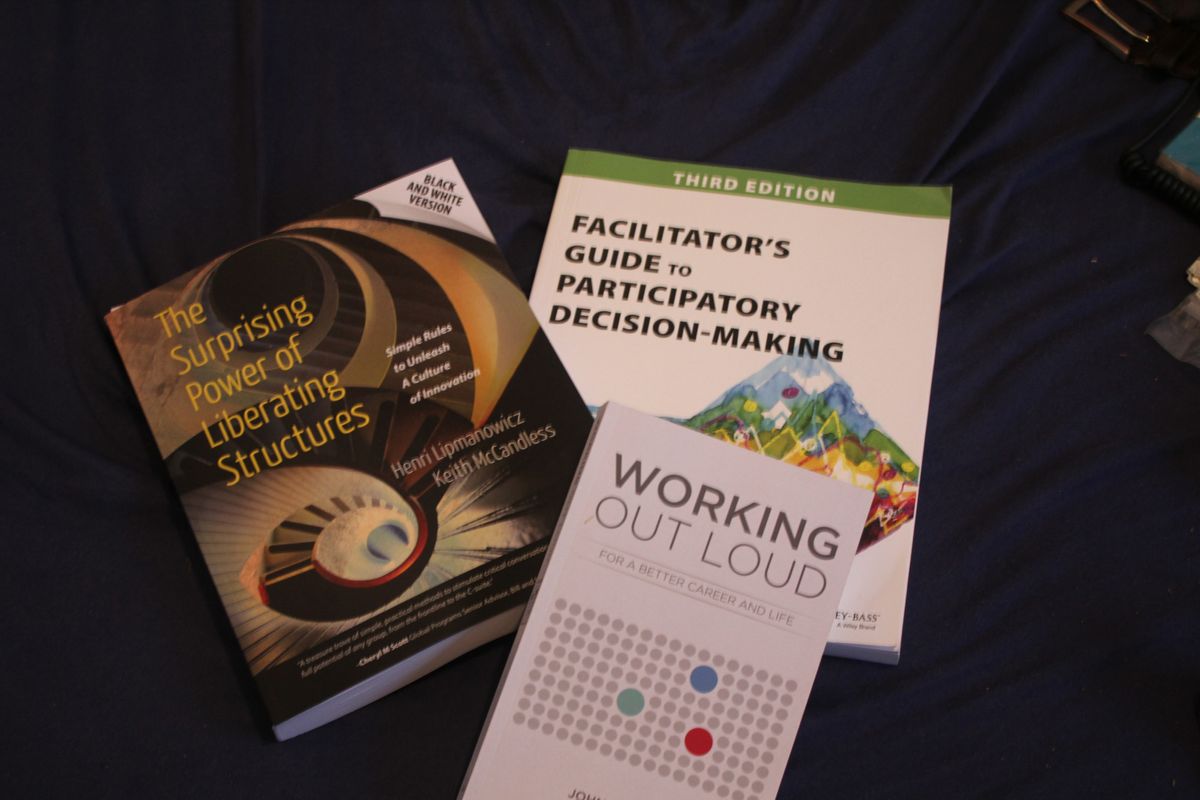Readings on Group Dynamics and Self Improvement

I've had three books next to my bed during the last week. Let's start with the worst one.
Working out Loud
"Working out Loud" is supposedly a method to make your work visible among a wider circle, with the intention of garnering career advancement and/or happiness. The primary tools of this method are blogs and social media.
The books author frequently refers to Dale Carnegie's "How to win friends and influence people." On multiple occasions he pitches his work as "Dale Carnegie for social media". I have read Carnegie 20 years ago. I was fascinated by the materialistic outlook on human relations. Maybe I'm too much of a romantic for this to ring true to me.
Some parts of his narrative intrigue me. For example when he asks, "How many people do you know that do the same job as you do, outside of your circle of friends?" But overall this is a weak book, vying to modernize its shining example Carnegie.
I didn't like the original, and I don't like this crude copy. I moved the book to the shelf after 150 pages.
The Suprising Power of Liberating Structures
This is a print edition of material that is available online at liberatingstructures.com. It does not provide anything beyond what you will find available online. That said, I'm a dead tree lover and find real books easier to read, when spending an afternoon in bed.
Liberating structures is concerned with little activities or games, that help groups to work collaboratively. See for example 1-2-4-All, a way to pose a problem to a group of people and to gather input from everyone.
I despised these kind of group dynamic games, later grew indifferent, and now I'm a firm believer in some of these techniques. They're in themselves quaint little games that seem rediculous. I would assume that grown up persons don't need a 'game' to express their needs and desires, or to talk about how they feel. But this isn't the case.
Especially in a workplace environment people will often not tell what they think, they will zone out or agree to whoever they think is the leader. Liberating structures are a way to circumvent this behaviour and unleash more potential in your group.
I'm not part of leadership and not an agile coach, but this little book helps our group at work to perform better and be more inclusive. Having the printed version is a nice perk, if you're talking to a colleague about a structure and don't want to gesticulate at the screen all the time.
Recommended.
The Facilitators Guide to Participatory Decision Making
This is a large format paperback book, published by Wiley in their management series. It starts off by giving a short history of what facilitation means and then heads straight to teaching you about group dynamics.
The book is written with the expressed intent that its pages may be photocopied and used during group sessions. The target audience is not limited to managers or facilitators (sic!). I think everyone who is interested in participatory decision making; every member of a group that wishes for an inclusive decision process. Will find something interesting in this book.
The authors take the position that not every meeting will lead to a decision. They advocate that the process that leads to a decision needs to work for every member of the group; that differences in opinion may be present even after a decision process, but good groups will tolerate divergent positions and will thrive nonetheless.
The 'Guide' gives a series of tools for people who facilitate (not necessarily full time facilitators) meetings, that aim to build better groups and better individuals. They try to avoid situations where groups drift toward the lowest common denominator, instead encouraging excellence.
Recommended.